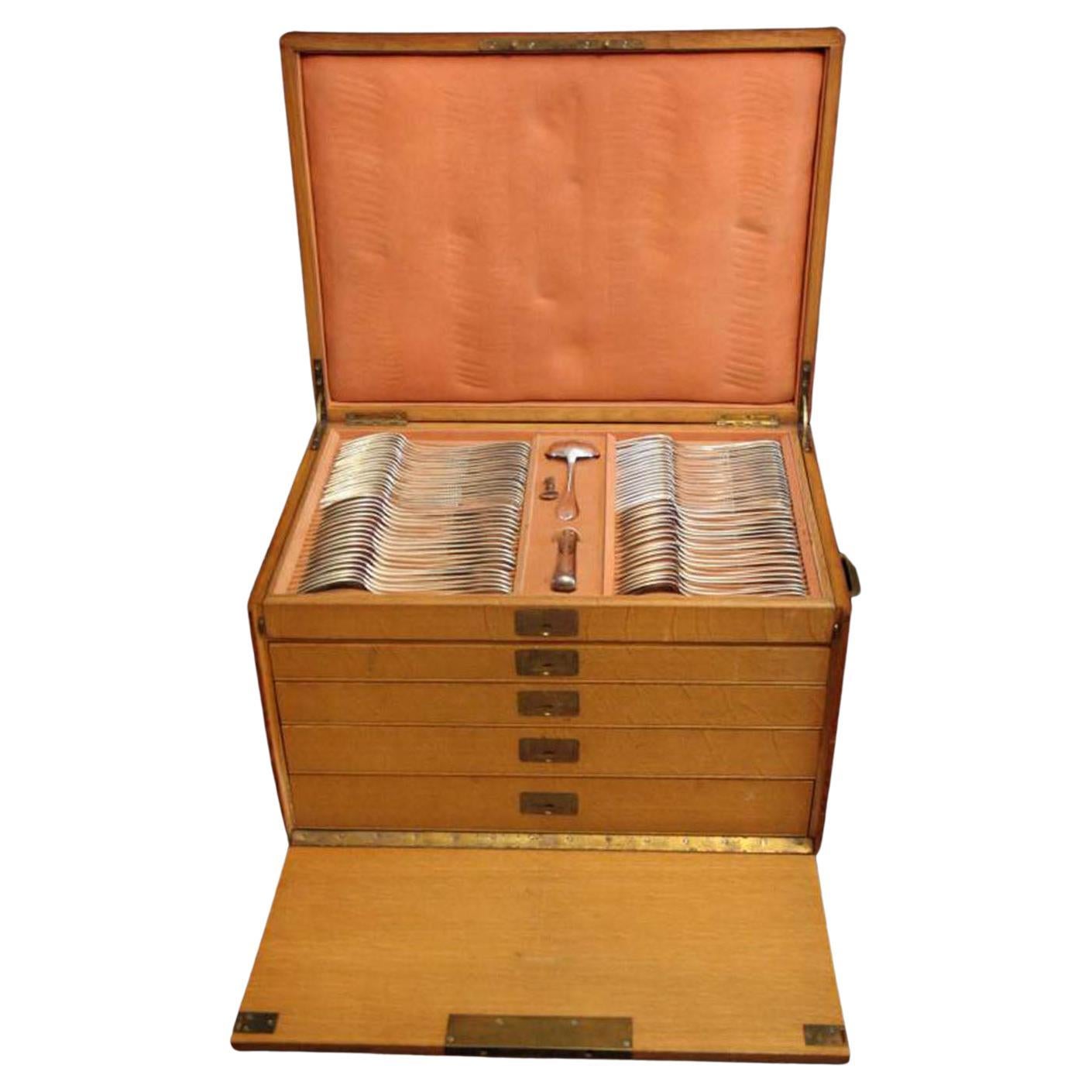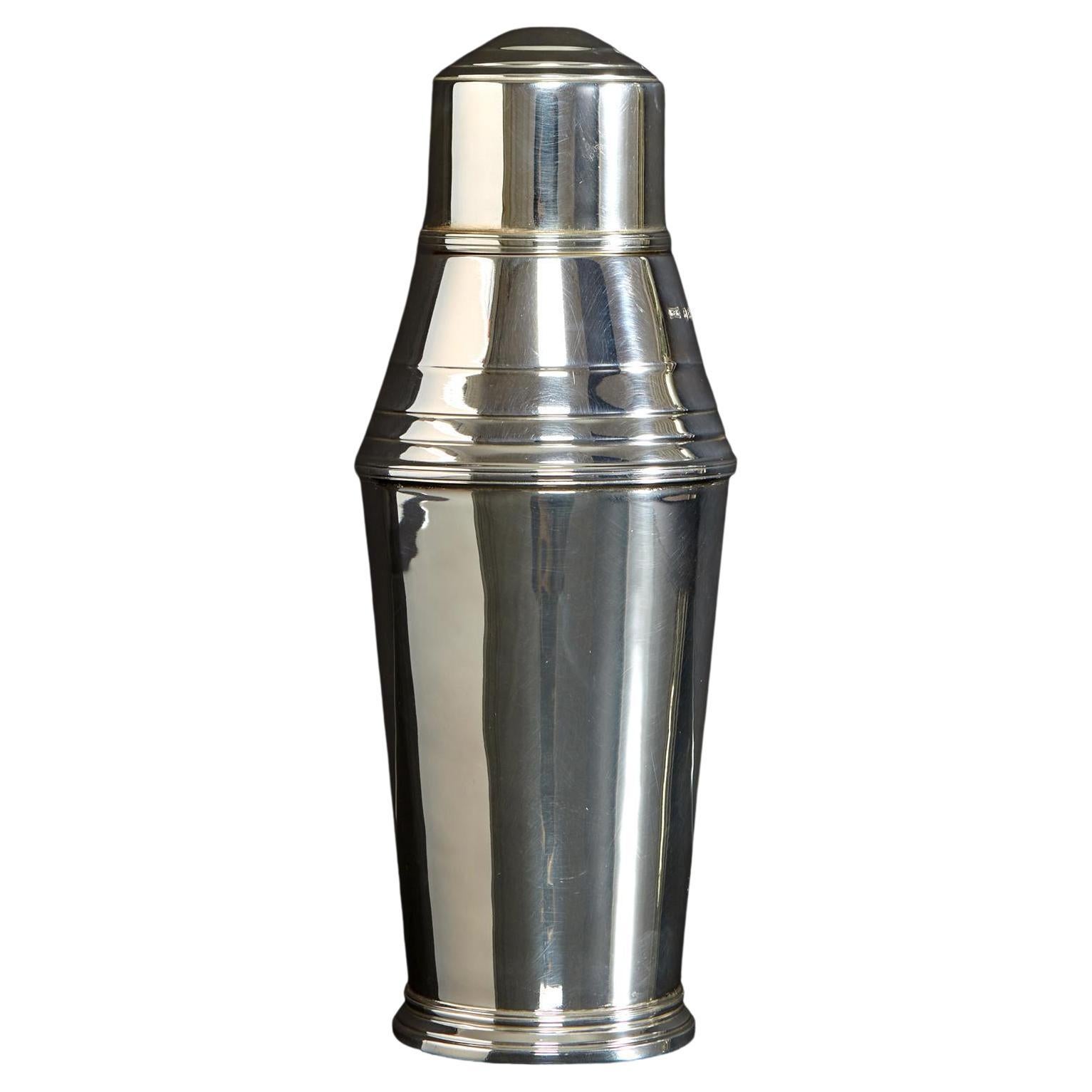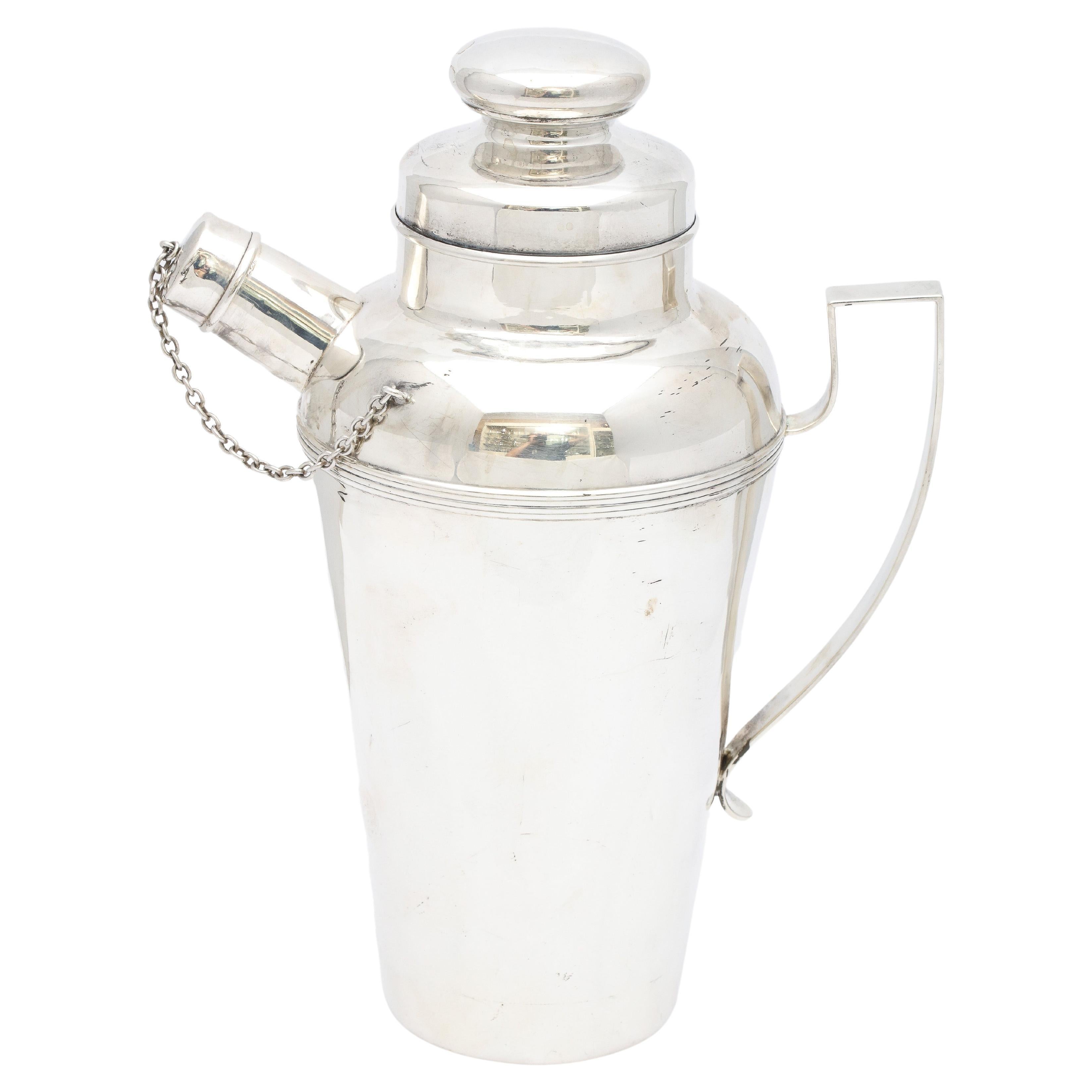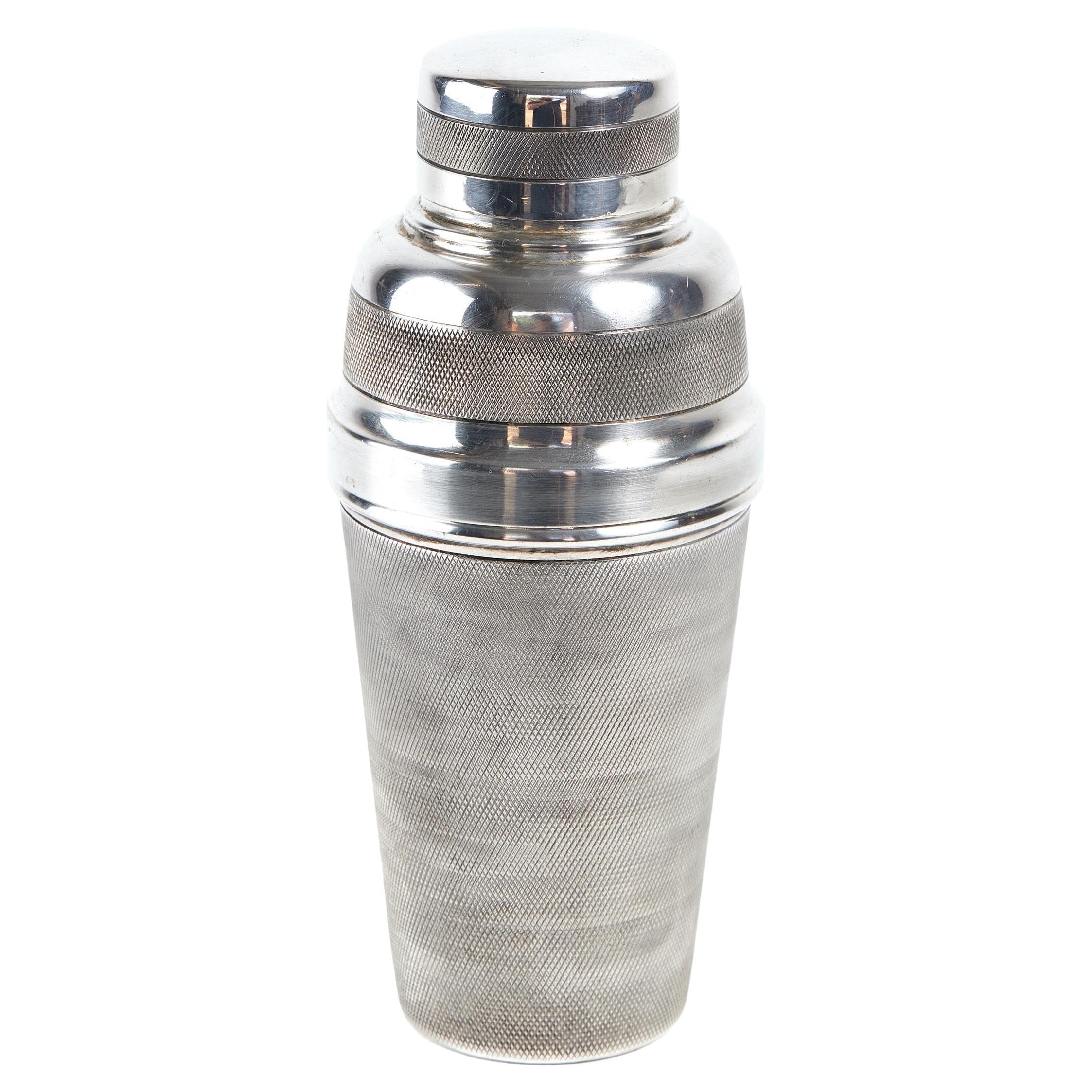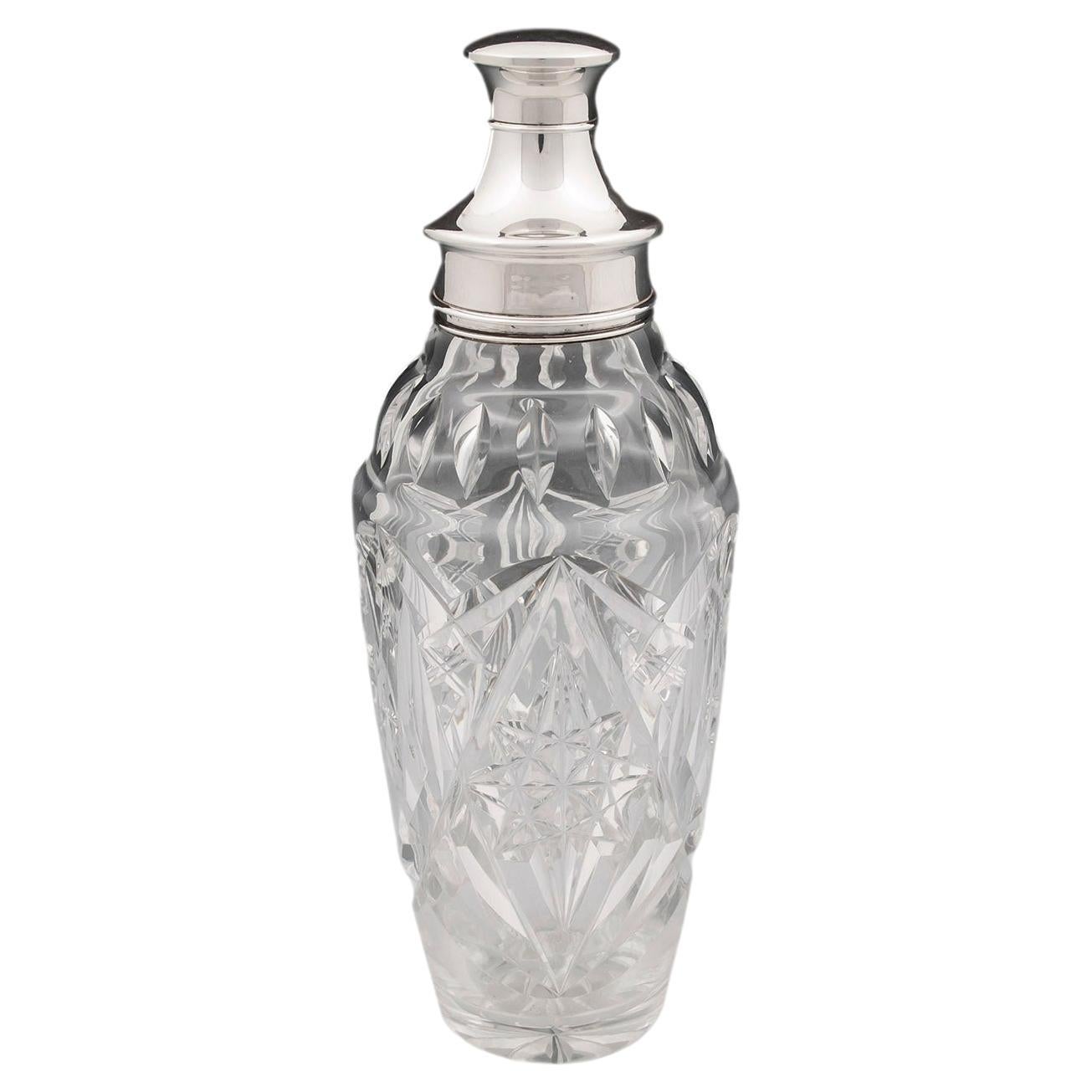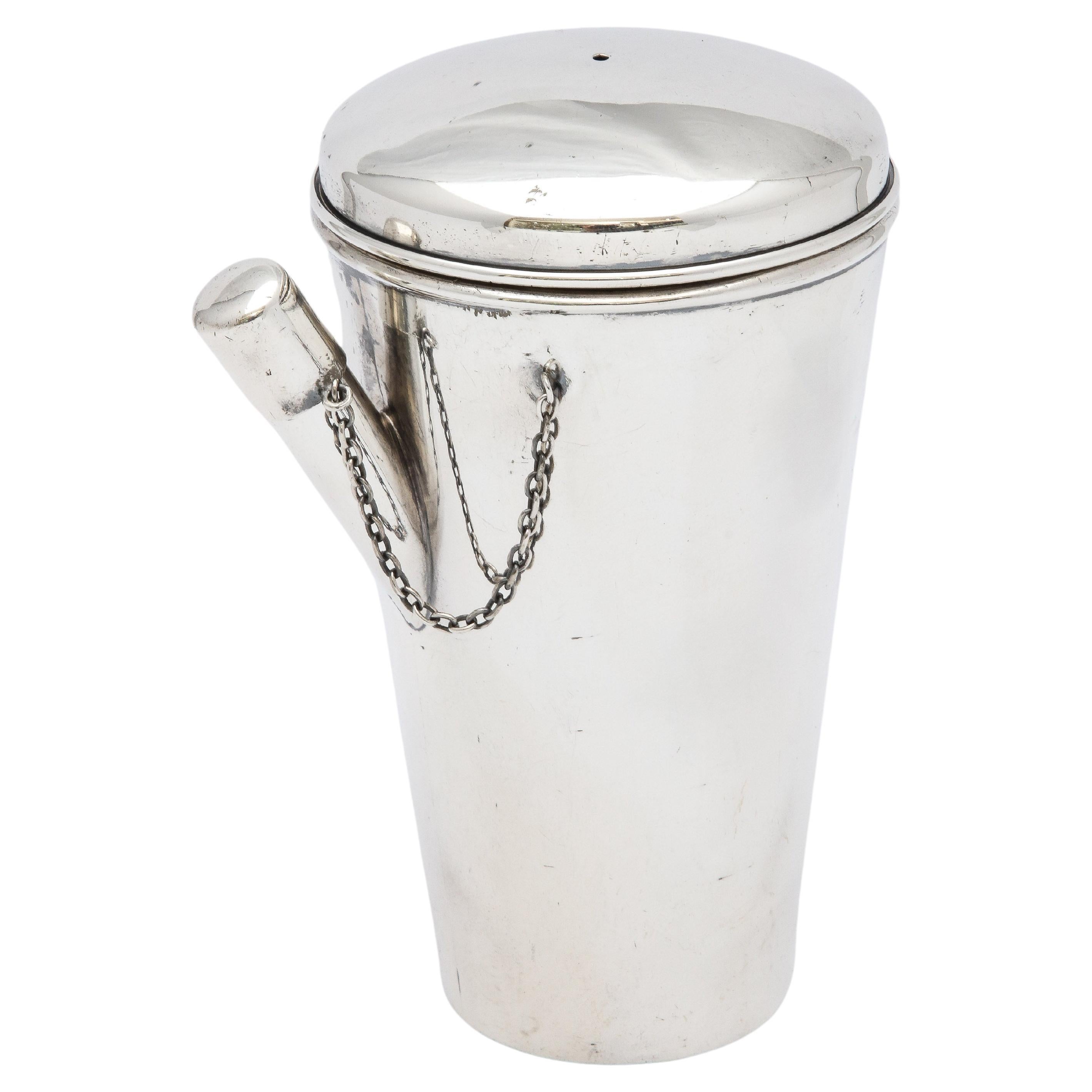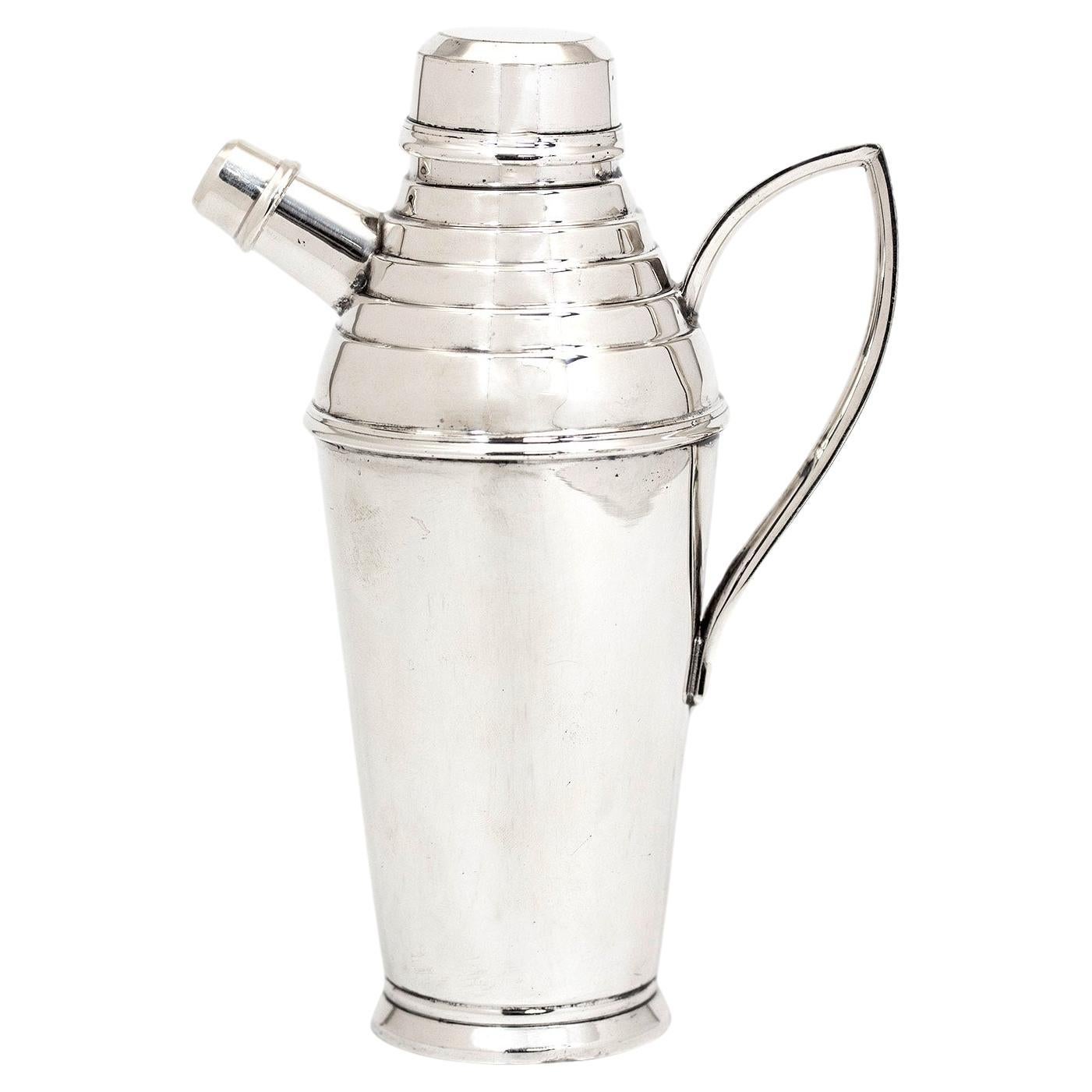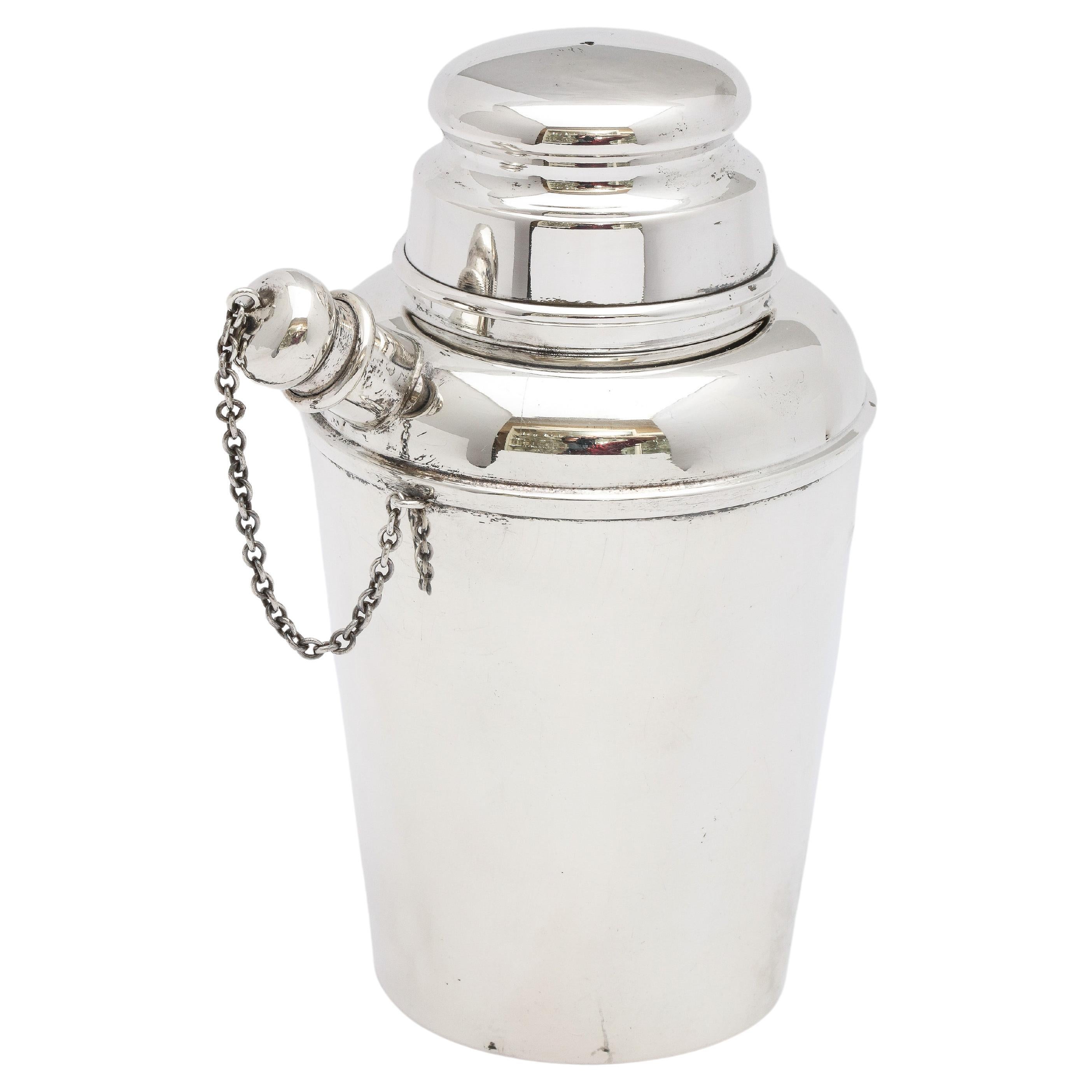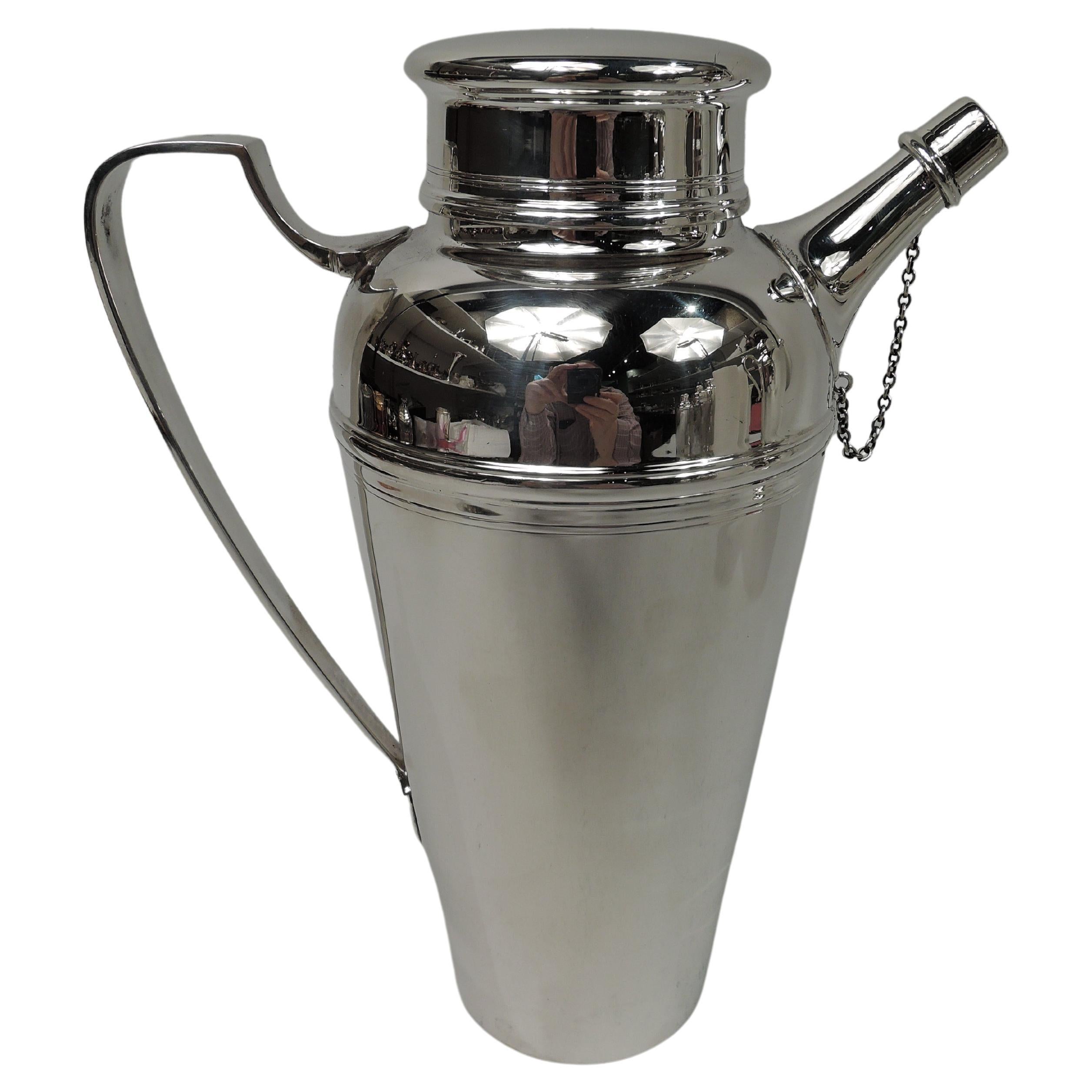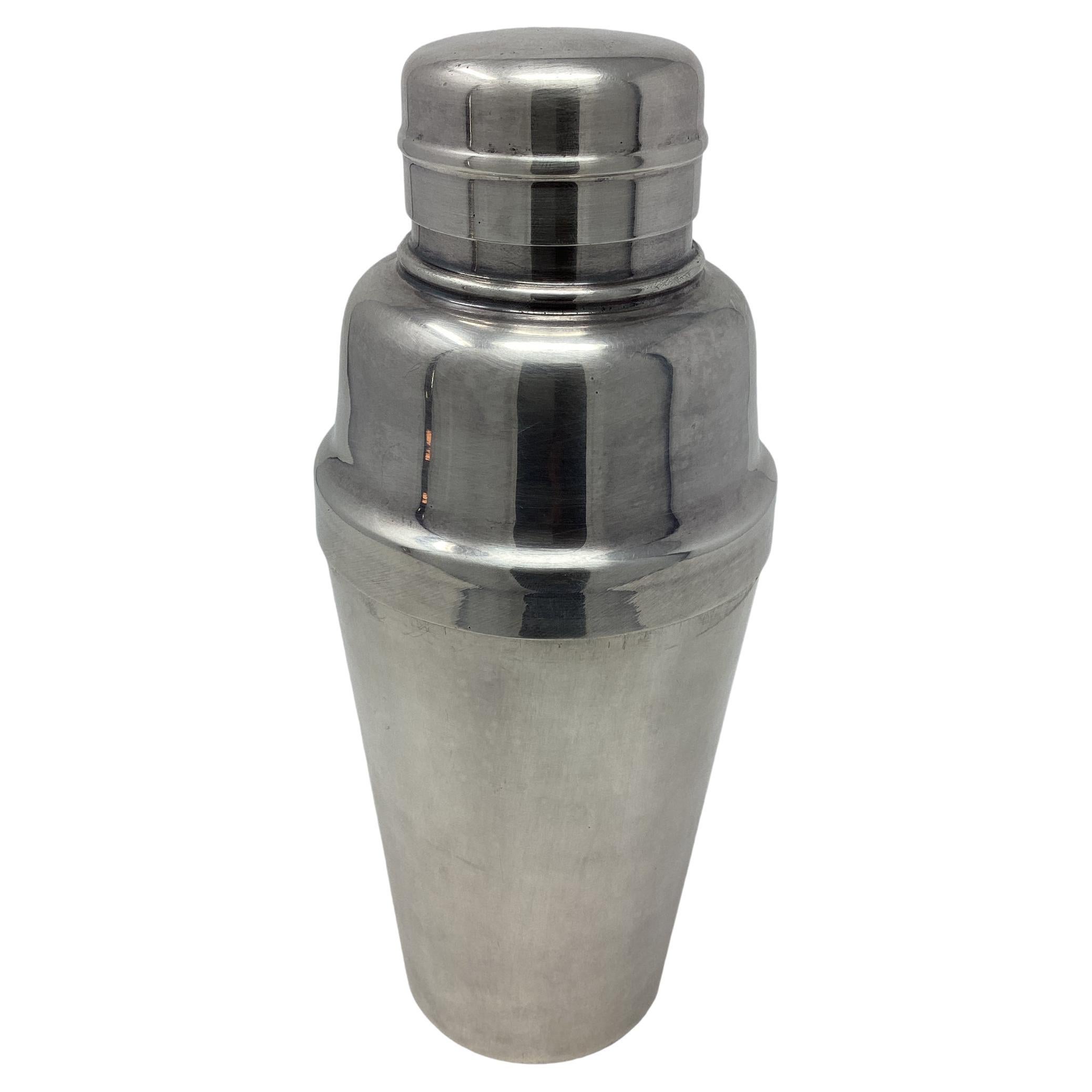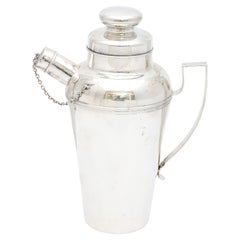
Maison Bloch Eschwege .950 Silver and Wood Art Deco Cocktail Shaker/Urn
View Similar Items
1 of 5
Maison Bloch Eschwege .950 Silver and Wood Art Deco Cocktail Shaker/Urn
About the Item
- Creator:Maison Bloch Eschwege 1 (Manufacturer)
- Dimensions:Height: 8 in (20.32 cm)Diameter: 5.25 in (13.34 cm)
- Materials and Techniques:
- Place of Origin:
- Period:
- Date of Manufacture:1921
- Condition:
- Seller Location:San Francisco, CA
- Reference Number:1stDibs: LU977514504192
You May Also Like
- Bloch & Eschwege - 273pc. Antique French 950 Sterling Silver Flatware Set, ChestBy Maison Bloch Eschwege 1, Jorgen BlochLocated in Wilmington, DEBloch & Eschwege 273pc. Flatware Set – Description 1st Dibs Direct from Paris, A Stunning 273pc. Privately Commissioned Napoleon III Sterling Silver Flatware Set with Rare Mother-of-Pearl Handled Knives, Original 5 Drawer Lockable Storage Chest and 25 Amazing Serving Pieces by Two of France's Premier Silversmiths "Bloch & Eschwege" Silversmiths to the French Elite, in Superb Condition - circa 1930s. The history of silver-smithing in France is rich and illustrious, and many prominent firms have contributed to its legacy. Among these, Bloch & Eschwege stands out as an exemplar of craftsmanship, innovation, and artistic excellence. Founded in the 19th century, this renowned silversmith firm has left an indelible mark on the world of decorative arts. Bloch & Eschwege was established in the mid-19th century by two remarkable artisans, Joseph-Alexandre Bloch and Emile-Robert Eschwege. Both men were passionate about the art of silver-smithing, and their partnership laid the foundation for a firm that would set new standards of excellence in the craft. Joseph-Alexandre Bloch was born in 1828 in the heart of Paris, a city renowned for its artistic heritage. As a young man, Bloch exhibited an exceptional talent for metalwork, earning an apprenticeship with a prominent Parisian silversmith. This experience provided him with valuable training in the art of working with silver and other precious metals. Bloch's dedication and skill earned him recognition in the silversmithing community, setting the stage for his future partnership with Eschwege. Emile-Robert Eschwege, born in 1832, hailed from a family of skilled metalworkers. His upbringing was steeped in the traditions of silver-smithing, and he showed a remarkable aptitude for the craft from a young age. Eschwege's family background and his own determination to master the art of silver-smithing made him a formidable candidate to join forces with Bloch. In 1855, Bloch and Eschwege joined hands to establish their silversmith firm in Paris. Their partnership was not only rooted in a shared passion for the craft but also a vision to create exceptional pieces that would capture the essence of French artistic expression. The early works of Bloch & Eschwege were characterized by a fusion of traditional silversmithing techniques and innovative designs. Their creations included intricately designed flatware, tableware, and decorative pieces that showcased their mastery over silver, gold, and other precious metals. Their creations soon gained recognition among the elite of Parisian society, attracting a growing client base. Bloch & Eschwege's reputation grew rapidly due to their dedication to artistic excellence and innovation. The firm's artisans continuously pushed the boundaries of silver-smithing, employing novel techniques and materials to create one-of-a-kind pieces. As Bloch & Eschwege's reputation continued to grow, they attracted the attention of European royalty and aristocracy. Their works found their way into the homes of kings, queens, and nobles, solidifying their status as one of the premier silversmith firms in Europe. The firm's most prestigious commissions came from members of the French royal family, including Emperor Napoleon III and Empress Eugénie. These commissions included exquisite pieces such as ornate candelabras, intricately designed tea sets, and opulent dining services. Bloch & Eschwege's creations not only adorned the palaces of the Tuileries and Compiègne but also graced the tables of state banquets and diplomatic events. Bloch & Eschwege's works were showcased at various international exhibitions, earning them accolades and awards. Notable exhibitions included the 1867 Exposition Universelle in Paris and the 1873 World's Fair in Vienna. The firm's contributions to these events highlighted their role in elevating French silver-smithing to the world stage. Each stunning sterling piece in this amazing set is skillfully handcraft with the fine workmanship that has made the "House of Bloch & Eschwege" a favorite amongst the French Elite. Renowned for their elegant styling and the legendary quality of their flatware sets, this set is an exemplary testament to the quality and luxury typical of early 20th century France - La Belle Epoque ! This set is in extraordinarily good condition. Each sterling piece bears the hallmark of Master French Silversmith "Bloch & Eschwege" in addition to the French Government's Head of the Minerva 1 hallmark certifying a minimum of 950 sterling silver. The sterling silver knive blades are by Charles Marseille. This set is of exceptional quality and craftsmanship - check the weights and measures below, all weights and measures approximate: 18 Dinner Knives - Mother of Pearl Handes 24.70 cm. 48 grams 18 Dinner Forks 21.50 cm. 82 grams 18 Tablespoons 21.50 cm. 88 grams 18 Luncheon Knives - Mother of Pearl Handles 20.20 cm. 28 grams 18 Luncheon / Dessert Forks 18.50 cm. 46 grams 18 Luncheon / Dessert Spoons 18.50 cm. 54 grams 18 Dessert Knives - Mother of Pearl Handles & Sterling Silver Blades 20.20 cm. 34 grams 18 Fish Knives 21.00 cm. 54 grams 17 Fish Forks 18.20 cm. 53 grams 17 Oyster Forks 12.00 cm. 22 grams 18 Ice Cream Spoons 13.00 cm. 20 grams 17 Teaspoons 12.50 cm. 19 grams 17 Cake Forks 13.50 cm. 22 grams 18 Knife Blade Rests - Sterling Silver 7.00 cm. 18 grams 1 Berry Serving Spoon 18.00 cm. 55 grams 1 Small "bonbon" Serving Knife 15.20 cm. 23 grams 1 Small Berry Serving Spoon 13.70 cm. 32 grams 1 Small Tart Server 13.20 cm. 25 grams 1 Small "bonbon" Serving Fork 13.70 cm. 23 grams 1 Cheese Serving Knife 19.50 cm. 35 grams 1 Butter Serving Knife...Category
Early 20th Century French Napoleon III Sterling Silver
MaterialsSterling Silver
$30,712 Sale Price / set24% OffFree Shipping - Art Deco Silver Cocktail ShakerBy Walker & HallLocated in London, GBClassic Art Deco period silver cocktail shaker with pull-off stepped cover, removable strainer and plug. The streamlined body has a collet base and stepped upper section, typical of ...Category
Vintage 1930s English Art Deco Barware
MaterialsSterling Silver
- Art Deco Sterling Silver Cocktail ShakerBy The Webster Corp.Located in New York, NYArt Deco, sterling silver cocktail shaker, The Webster Corp., North Attleboro, Mass., Ca. 1935. Measures almost 9 3/4 inches high x 4 1/2 inches diameter (at widest point). Weighs 12...Category
Vintage 1930s American Art Deco Sterling Silver
MaterialsSterling Silver
- Art Deco Silver Plated Cocktail ShakerBy James Dixon & SonsLocated in Dereham, GBArt Deco Silver Plated Cocktail Shaker circa 1920s Engine turned Detail integral Lemon Squeezer Very Good Quality Makers Marks on Base R & D S&L ...Category
Vintage 1920s British Art Deco Barware
MaterialsSilver Plate
- Art Deco Silver Plate Cocktail Shaker by Maison Vessiere France, 1940sBy Atelier Moderne d’Orfèvrerie.Located in Atlanta, GAThis elegant French Art Deco silver plate cylindrical cocktail or Martini shaker was designed by silversmith Maison Vessiere, Paris. The three-sectioned cocktail shaker has a removab...Category
Vintage 1940s French Art Deco Barware
MaterialsMetal, Silver Plate
- Art Deco Sterling Silver & Glass Cocktail ShakerLocated in Northampton, GBFrom the Art Deco Period Dated 1930 From our Barware collection, we are delighted to offer this Art Deco Silver & Glass Cocktail Shaker. The Coc...Category
Early 20th Century English Art Deco Barware
MaterialsSilver, Sterling Silver
Recently Viewed
View AllMore Ways To Browse
Decanter With Silver
Vintage Glass Ice Bucket Ice Buckets
Silver Drinking Glass
Glasses For Drinking
Bar Ice Bucket
Silver Stopper
Silver Drinking Glasses
Mid Century Cocktail Bar
Midcentury Cocktail Bar
Antique Barware
Modernist Ceramics
Silver Champagne Glasses
Cocktail Barware
Gold Bar Glasses
Champagne Glasses Silver
Silver Champagne Glass
Italian 1970s Bar
Glass Shaker
